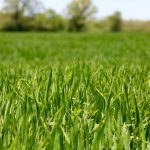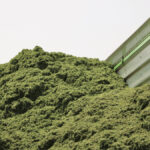Tag Archives Forages

Winter wheat conditions promising, corn planting sees slow start
OMAFRA Field Crop Report for the week of May 2

Saskatchewan forage rainfall insurance to adjust for hot spells
SCIC also expanding crop roster for contract price option

Forage management vital to achieve top-quality feed
Low-lignin alfalfa is a new tool that requires changes in harvest timing

Data project could drive new forage tools
Alfalfa hasn’t had the data tied to best management practices that has benefited row crop growers

Producers like flexibility of grass-based forage options
Weather, rootworm resistance are reasons to consider alternative crops

Spring update for cereal crops and oilseeds
OMAFRA Field Crop Report for April 29

Manitoba forage, grassland growers burned by drought

Silage options to rotate away from corn
Ryegrass, triticale, sorghum species all have potential to help avoid corn-on-corn rotations

Hay acreage increasing in Ontario
Extra acreage should help reduce costs for farmers who have to buy hay

A good forage stand requires agronomic base
Keys to success include planting at right time, proper seed bed, seed placement, quality seed and weed control


